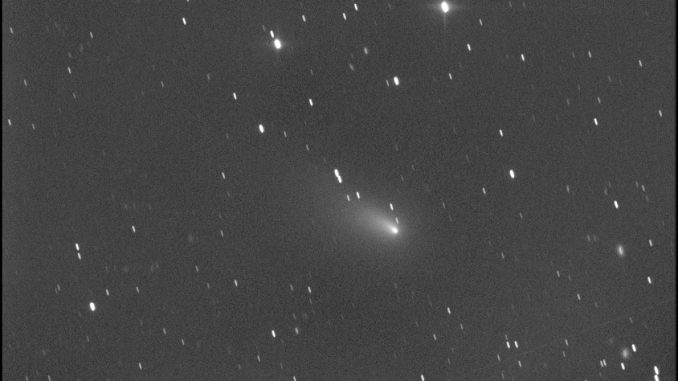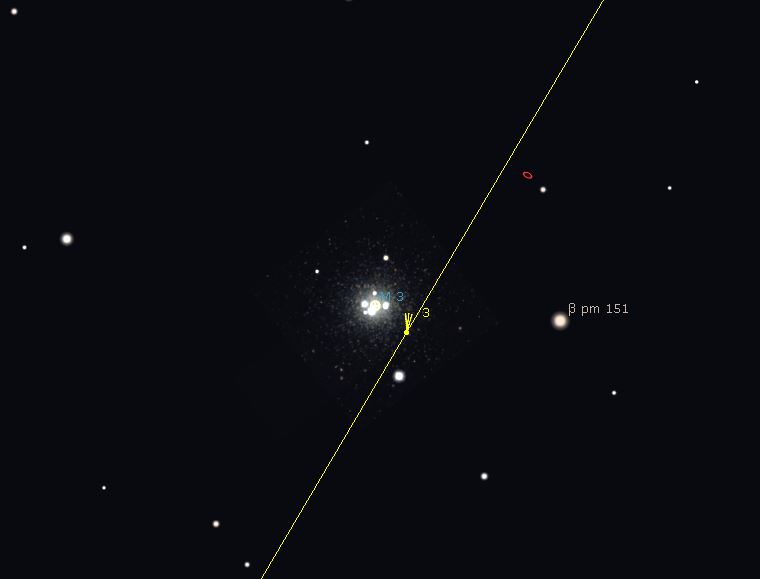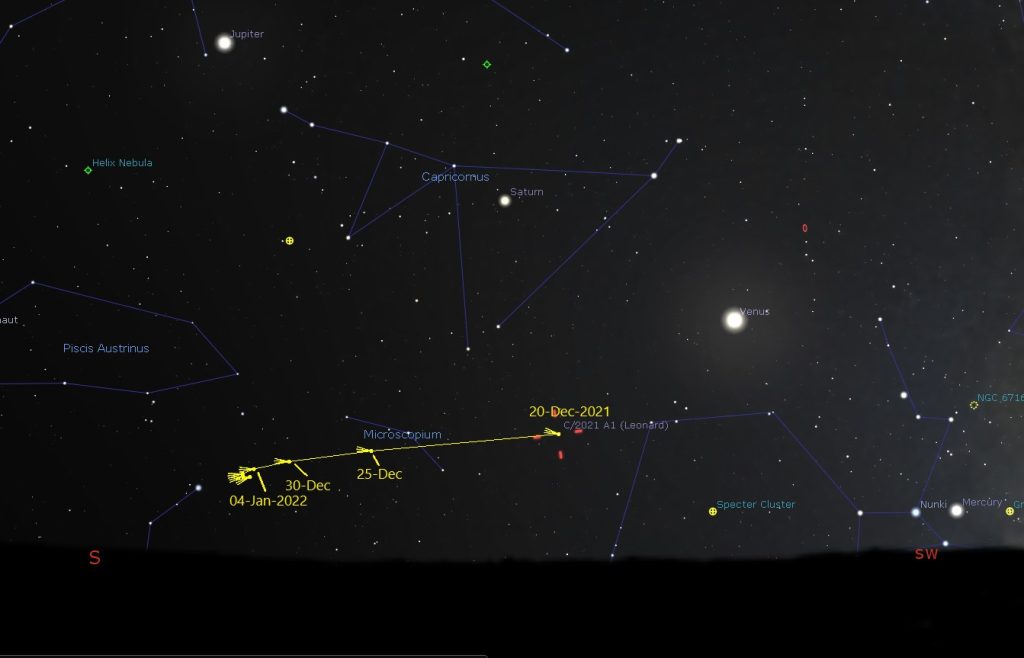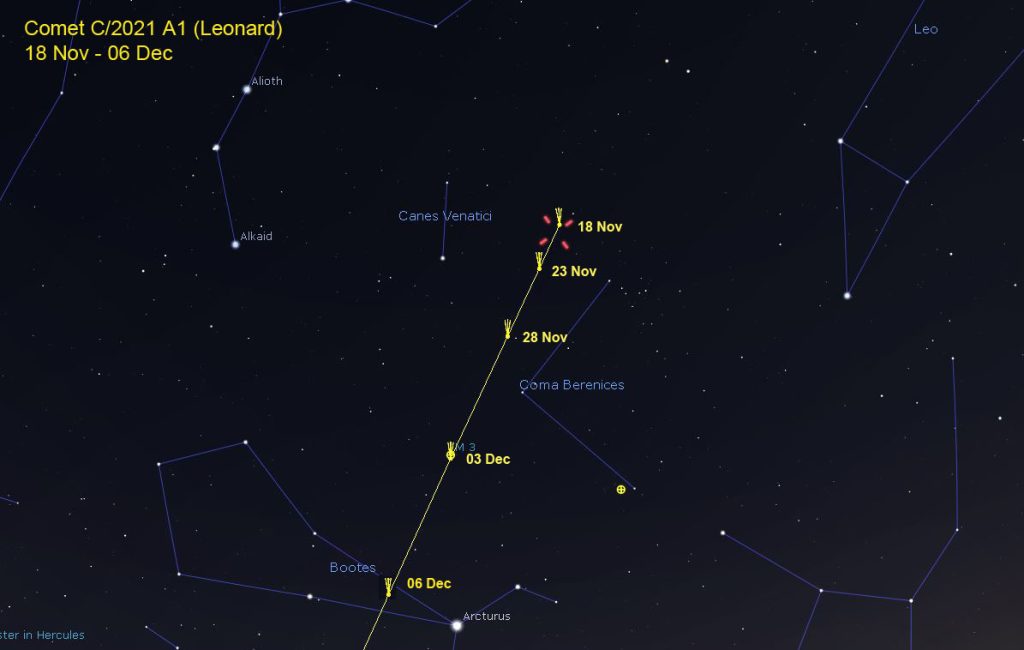
One of the most promising comets of 2021, Comet C/2021 A1 (Leonard) has brightened as expected as the object draws closer to the Earth and Sun. This much anticipated comet was discovered on 3 January, 2021 by astronomer Greg Leonard at the Mount Lemmon Observatory in Arizona.
At the time of discovery, this long period comet was 5 Astronomical Units (AU), (or 750 million kilometres) from the Sun. At a brightness of just 19th magnitude, it appeared as a mere speck of smudged light in even the largest of telescopes.
Orbital calculations show that the comet has spent around 35,000 years on its journey around the Sun with a maximum perihelion distance of 3,500 AU. Comet Leonard will pass our nearest star on January, 03 2021 at distance of 0.62 A.U. (almost 59 million miles). Two weeks beforehand however, the comet will make its closest approach to Earth on December 12th at a distance of 21.7 million miles.
How bright is Comet Leonard now ?
At the time of last update (21-Dec), the comet’s brightness is currently hovering around visual magnitude 3 after a recent outburst. This makes it a great object for visual, binocular and telescopic observation.
Where is Comet Leonard right now ?
Comet Leonard is currently residing in the constellation of Microscopium around 15 degrees East of bright Venus in the evenings.
The comet is moving at an exceptionally fast 70.67km per second (or 158,084 miles per hour). This means that despite the vast distances involved, the comet’s position in the sky is already moving quite fast from day-to-day. Be sure to keep returning to this page for updates and use the finder charts below.
Comet Leonard finder chart – 20 December 2021 – 05 January 2022
Comet Leonard finder chart – 18 November – 06 December
When is the best time to observe Comet Leonard ?
For northern sky observers it is possible to view comet Leonard in the evening skies albeit very low and close to twilight throughout. It is best to view the comet in the early hours before dawn. The comet is much better positioned and can be viewed higher in the sky and further from the Sun’s twilight at this time.
The later in the early hours you wait, the higher in the sky the comet will be (which is always better). Of course don’t wait too late or twilight will hinder observation.
It’s always up for debate when deciding on the best days to observe a comet and C/2021 Leonard one is no exception. From the northern hemisphere, Comet Leonard will be brightening each day up until closest approach on 12 December. However the closer we get to this date, the lower in the sky the comet will be before twilight intervenes.
The sweet spot it likely to be early December once the Moon is out of the way anytime between the 04 and 10 December.
How bright will Comet Leonard get ?
It is always difficult to predict how bright a newly discovered comet will get. This is mainly due to the unpredictable nature of comets with sudden break-ups to outbursts sometimes just around the corner. The good news however is that calculations show that this comet has been around for along time. This means that any volatile ice or weak spots in the comet (that often lead to unrealistic predictions) would already have vaporised in previous passes of the Sun. This means that brightness predictions ‘should’ be more reliable given the ‘experienced’ nature of this comet.
Current observations show the comet at magnitude 9 in mid-November. Current predictions set Comet Leonard to peak at magnitude 4 or possibly higher. This puts the comet within the realm of naked eye visibility. Who knows, this comet may compete with last year’s show from Comet Neowise which almost reached magnitude 1 while still well positioned.
Photographic opportunities
The Comet’s trajectory takes it through some galaxy-rich constellations such as Coma Berenices and Bootes. The icy object reaches within half of a degree of quite a few deep sky objects. On the 19th November, Comet Leonard will lie 0.2 degrees from 10th magnitude spiral galaxy NGC 4395.
5 days later, on the night of 24-25th November the comet moves directly between NGC 4631 (the Whale Galaxy) and NGC 4656 (the Crowbar Galaxy). This will make for an excellent photographic opportunity.
Perhaps the highlight of these cosmic encounters will be on the night of 02-03 December when Comet Leonard brushes shoulders with 6th magnitude globular cluster M3 in Canes Venatici.



